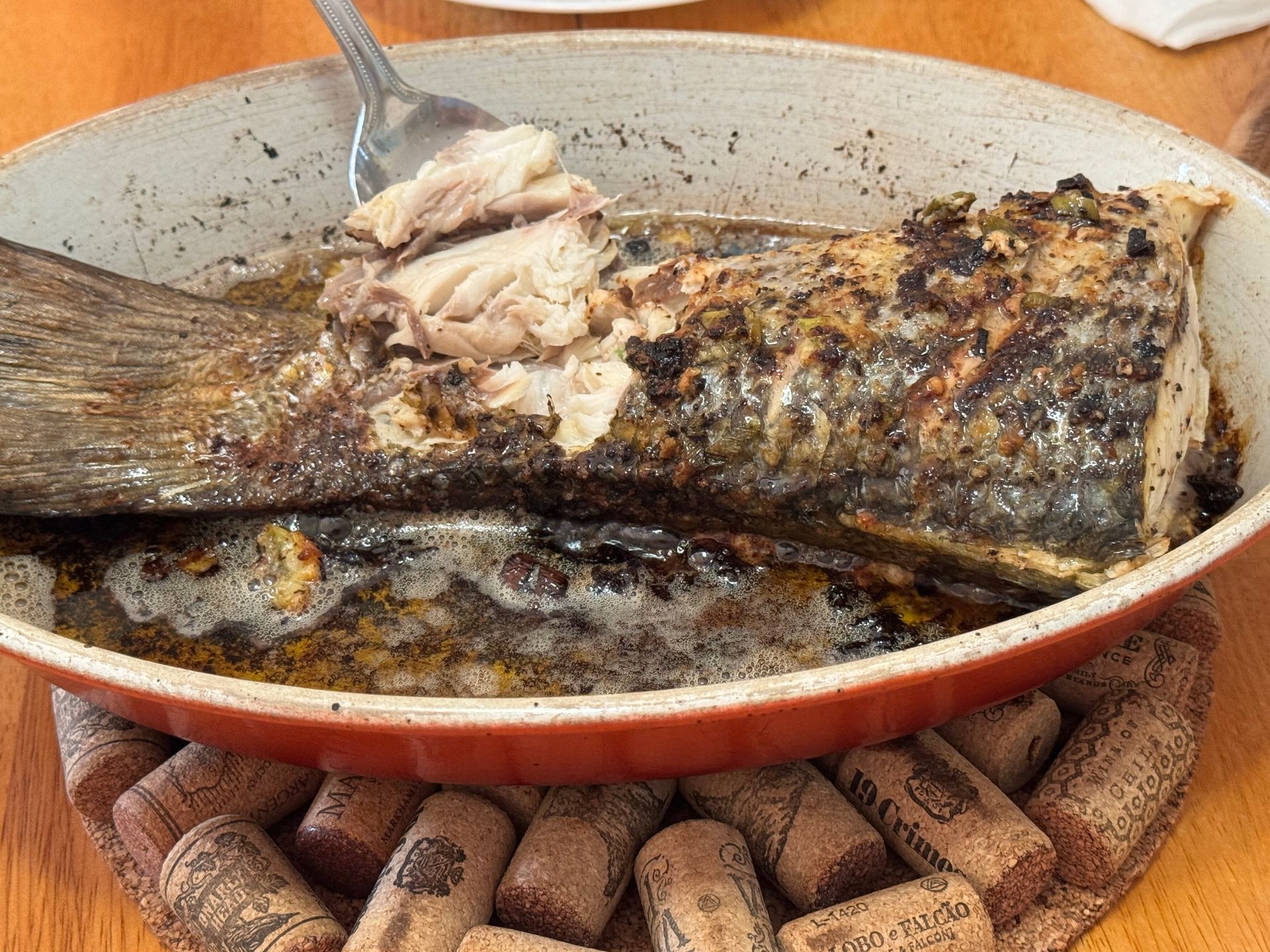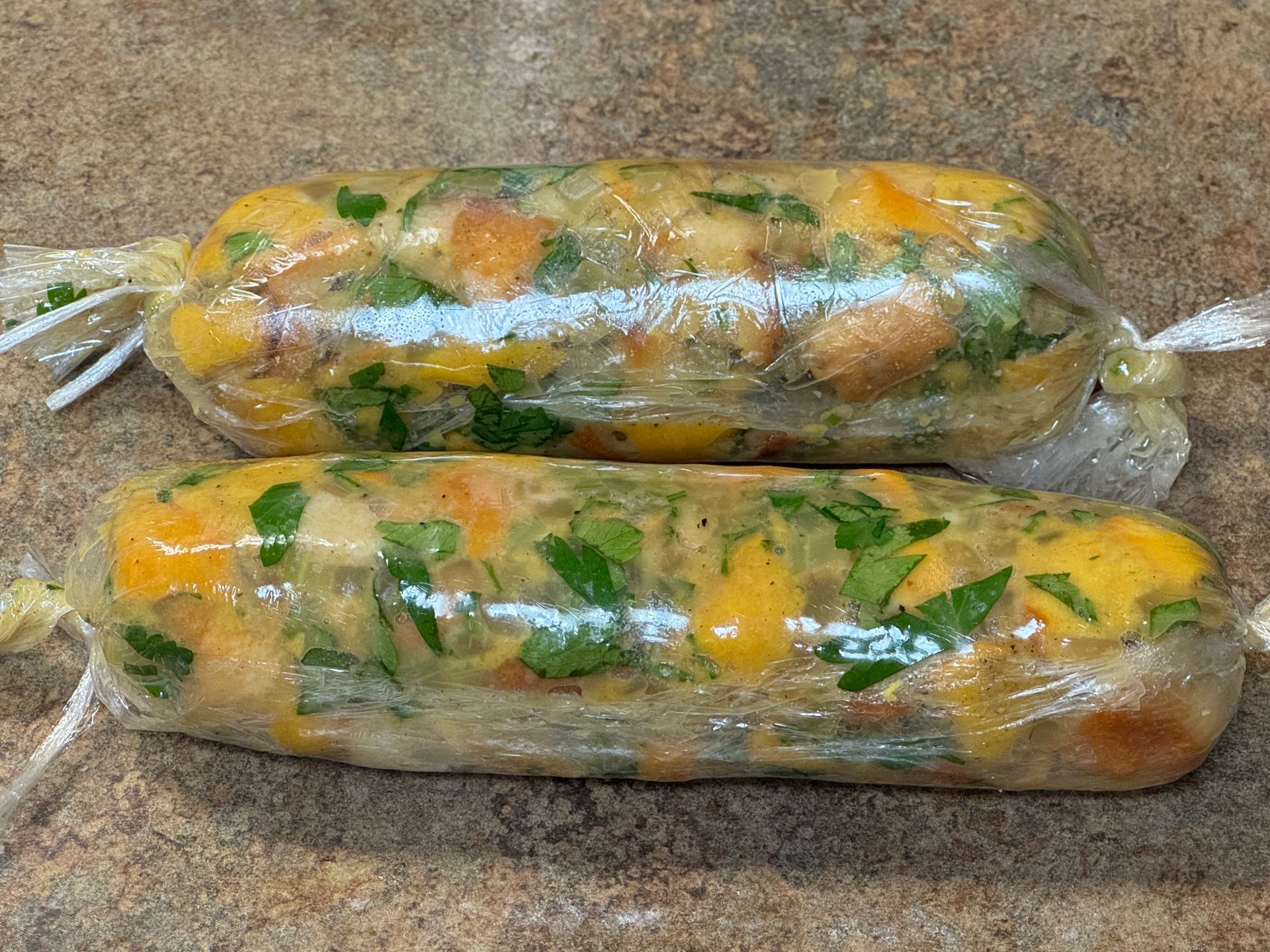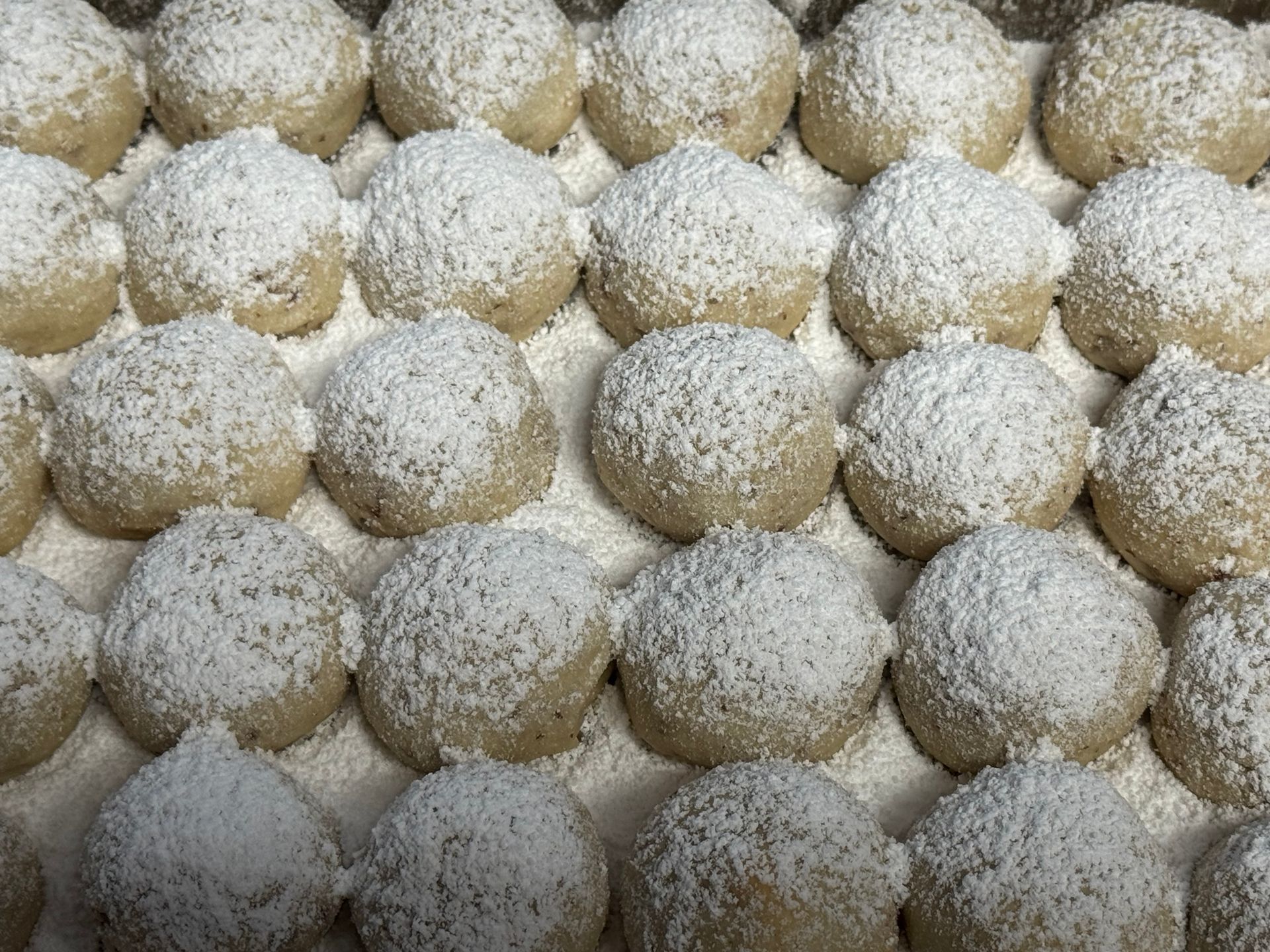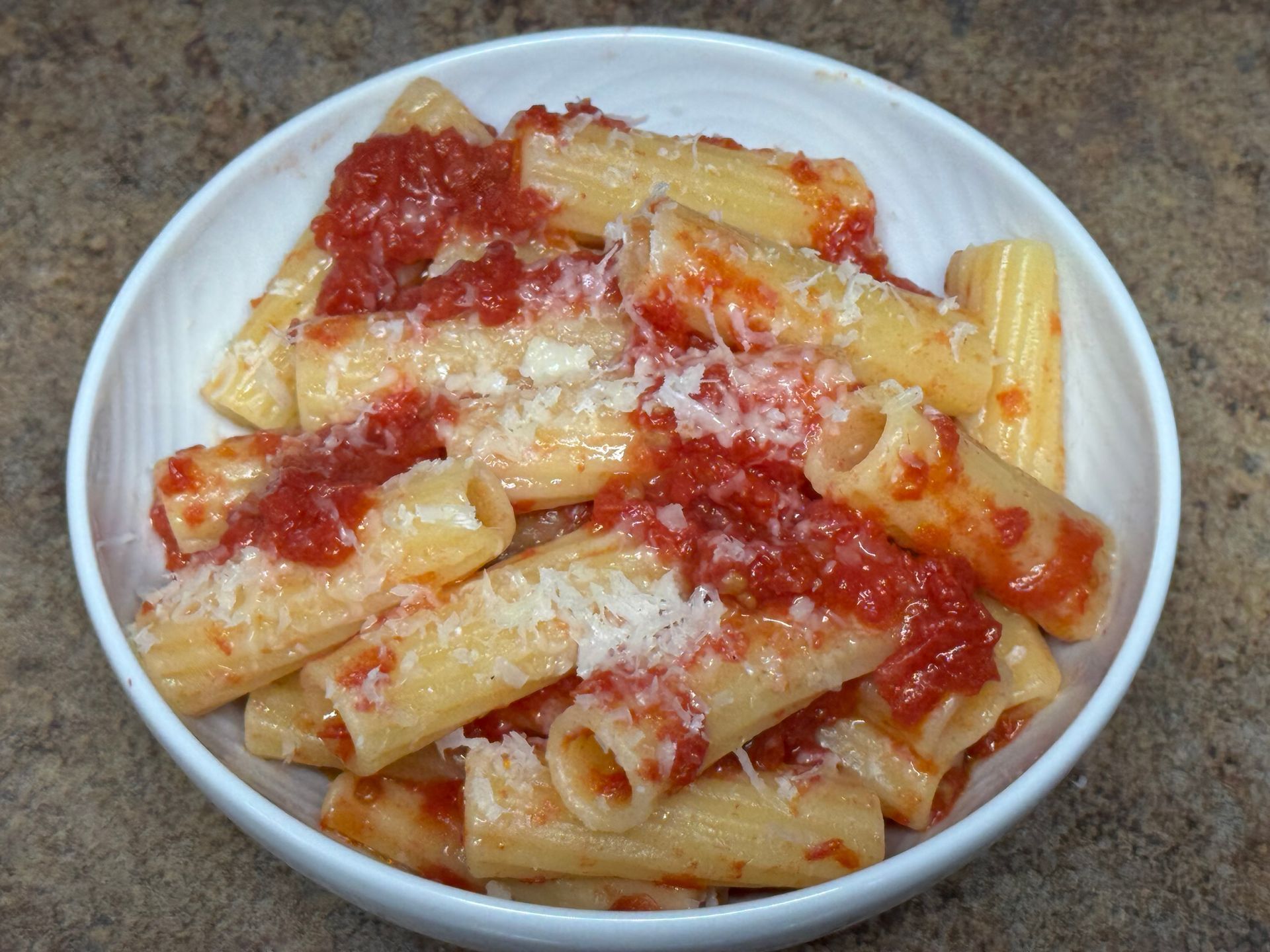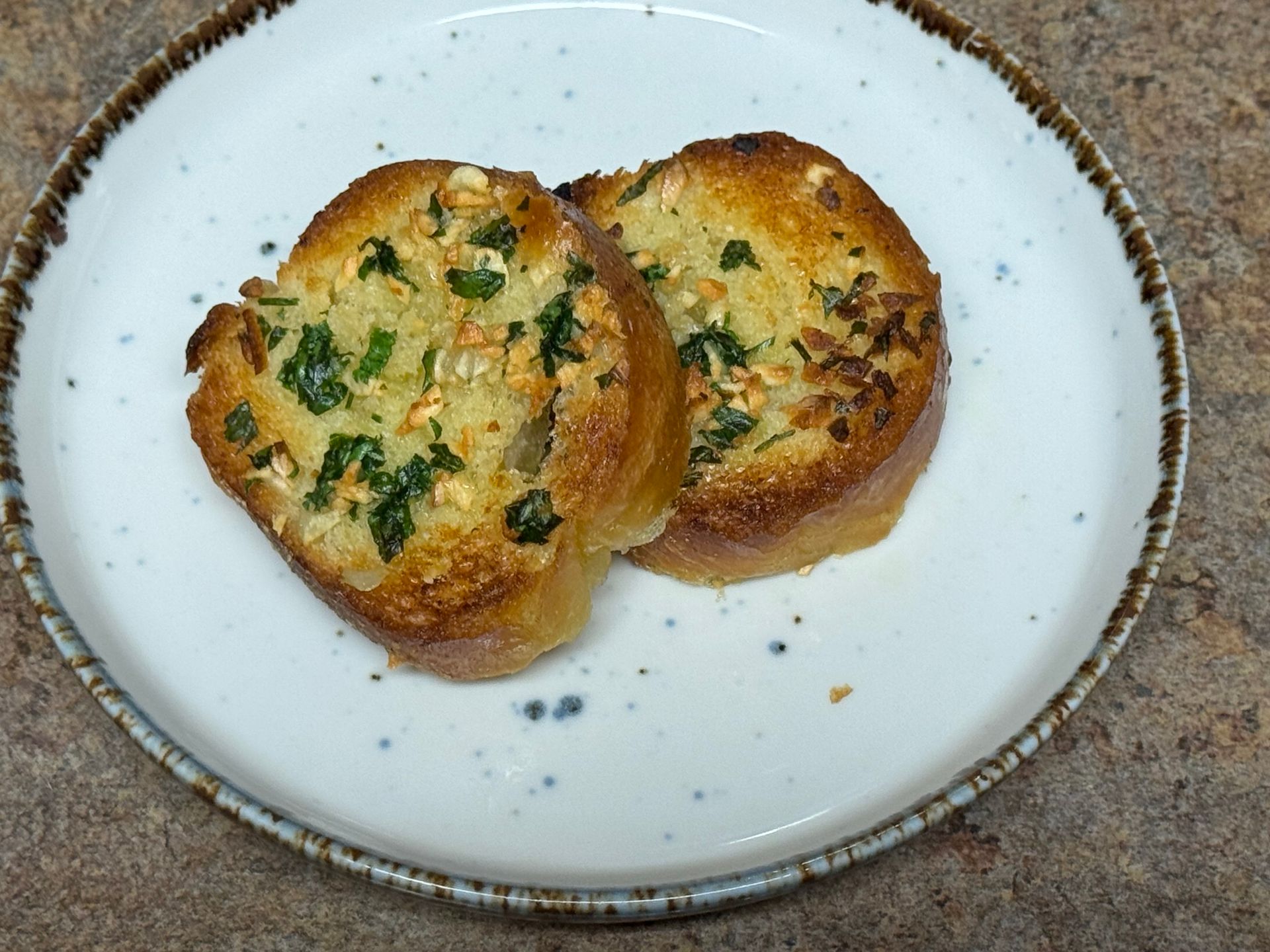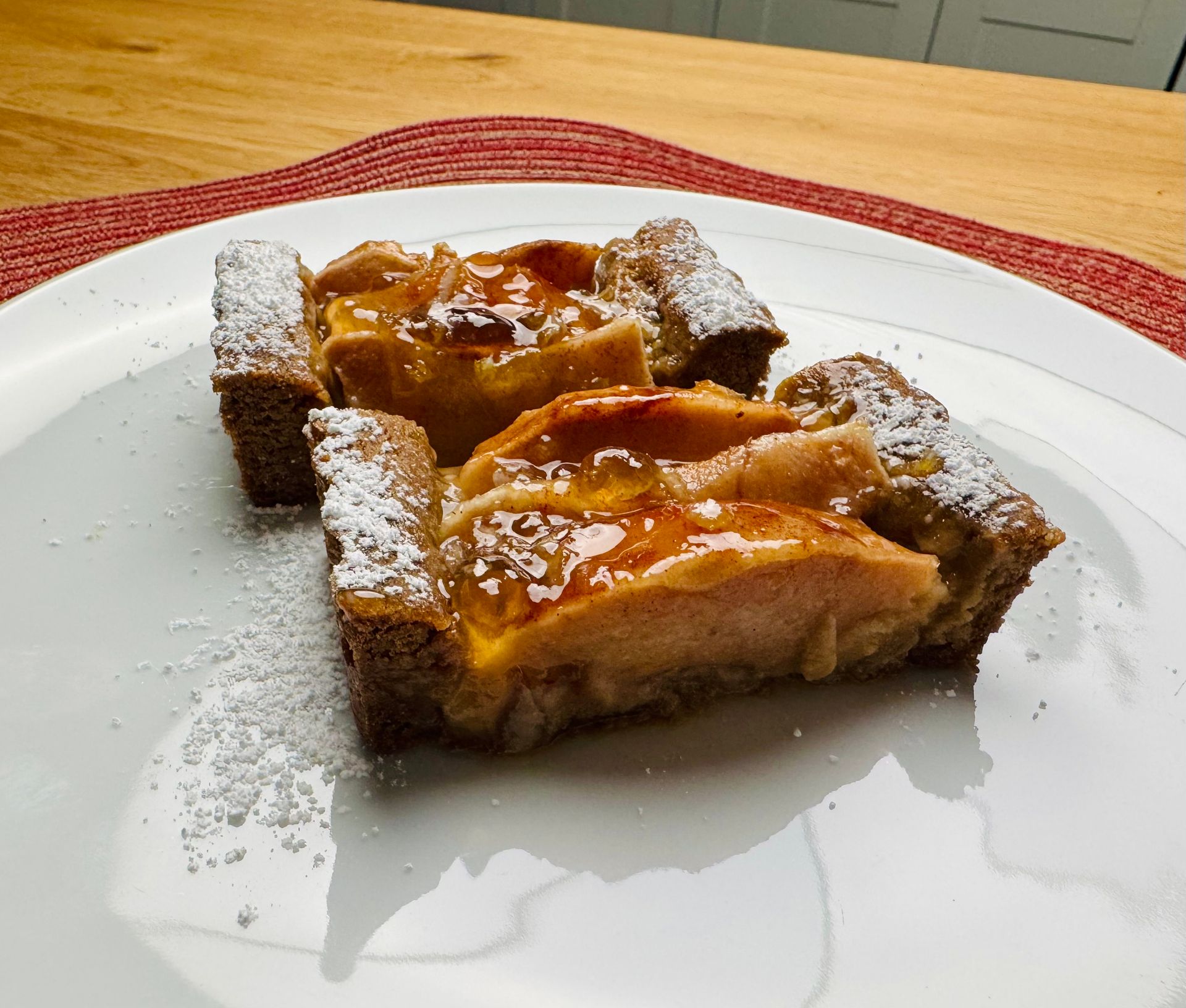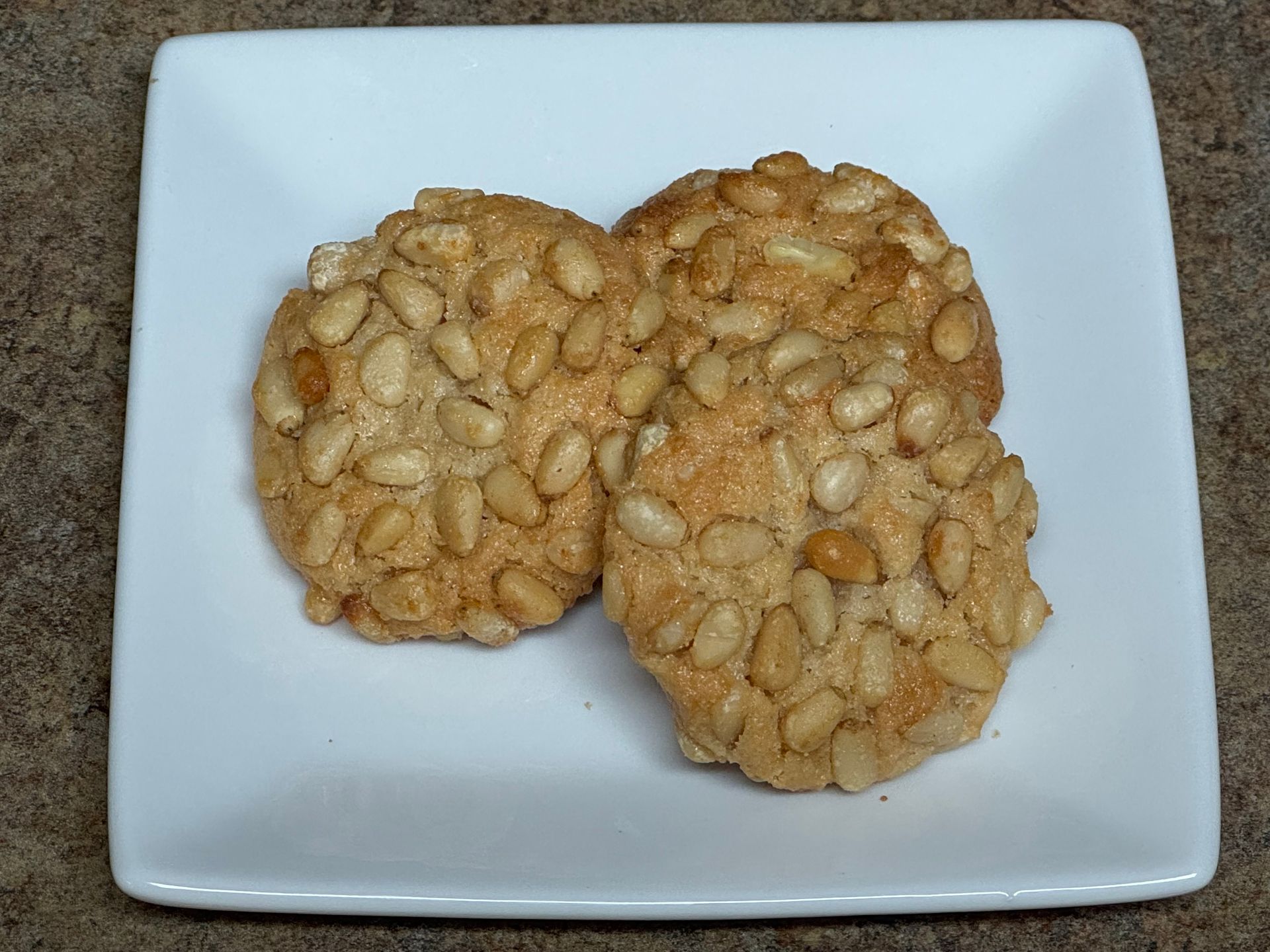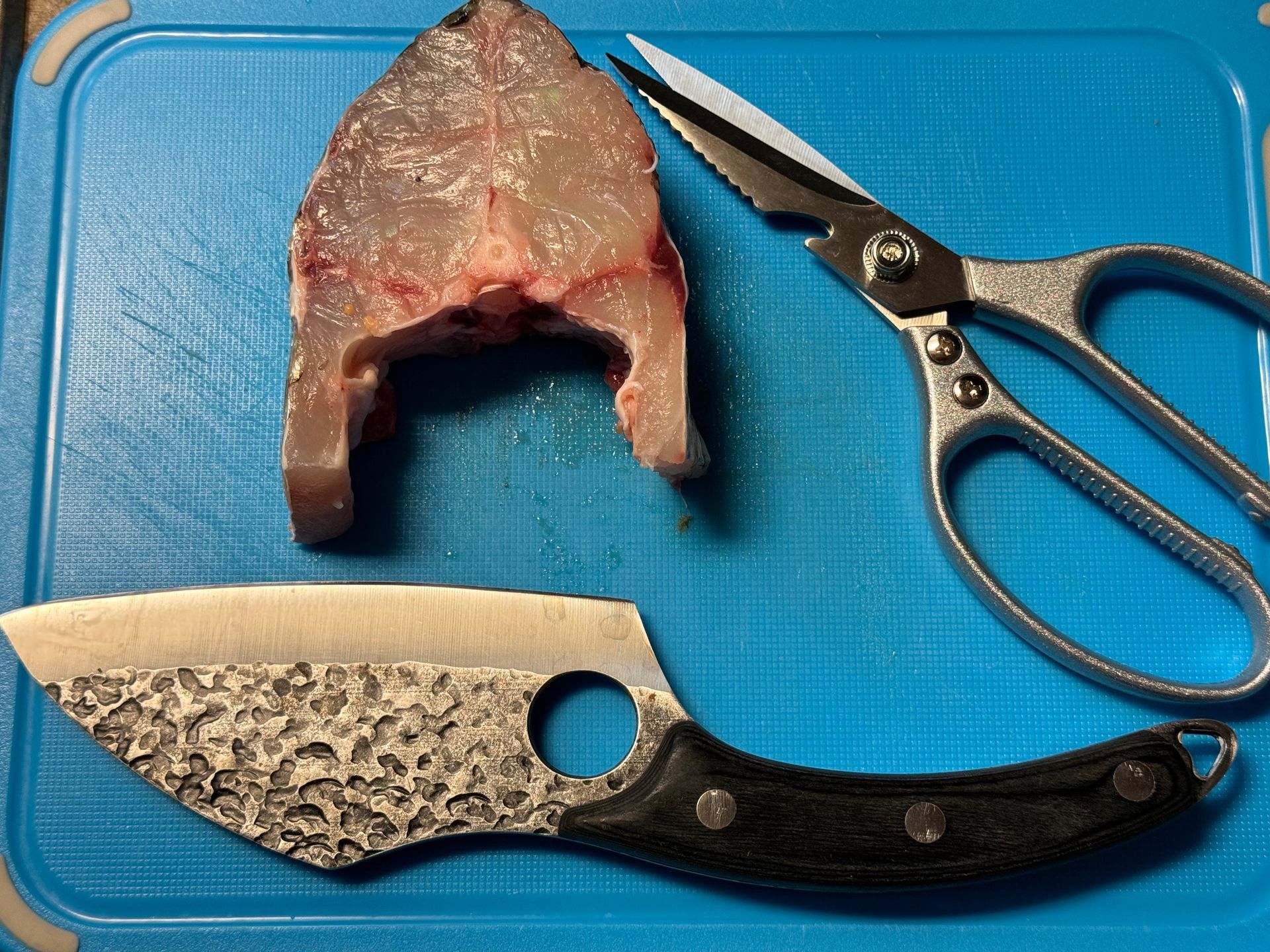
One of the more challenging classical seafood dishes I know of requires fabricating a whole fish in to perfectly even darnes, trussing the darnes and then gently poaching in a Court Bouillon.
While the darnes are still quite hot, the pin bones need to be pulled (they are on a diagonal), the butcher twine needs to be cut away, the skin needs to be peeled and the seafood must be plated without breaking... and served piping hot with Sauce Hollandaise & boiled, tourneed potatoes. I repeatedly practiced this dish for the CMC exam with a whole salmon... quite the challenge!
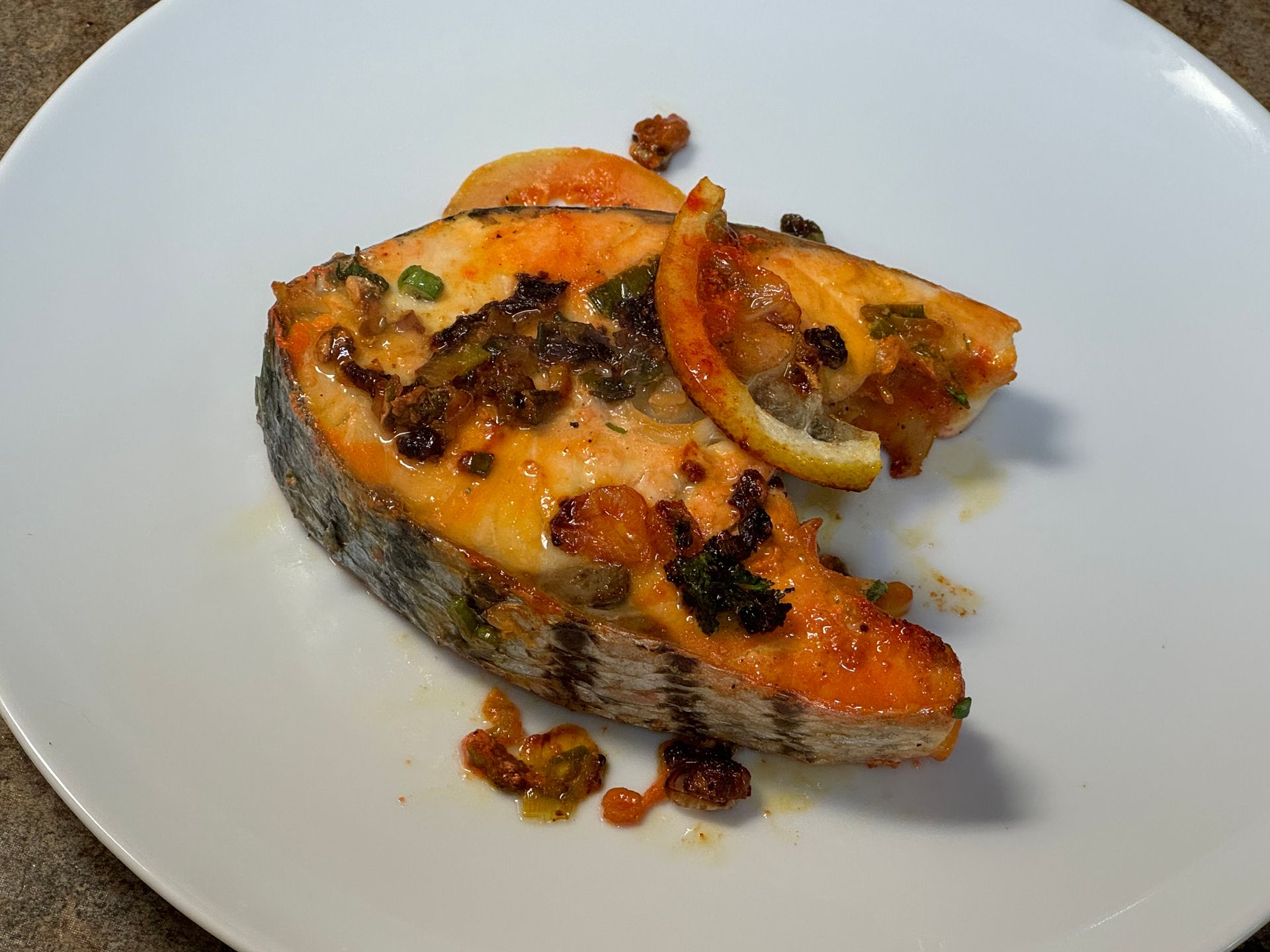
Darne; Striped Bass
Fabricating seafood is a tremendous amount of work, requiring experience, proper technique, patience & the correct tools. One of my responsibilites at my first professional cooking jobs was 'fish butcher'. I loved it and remember the fins, bones, gills etc... constantly pricking my fingers when I fabricated a large variety of seafood. Cuts from fish are no fun, they get infected and take a very long time to heal!
These days I wear thick gloves for protection & use strong shears, tweezers, boning knives and a small cleaver to make the job more manageable.
I believe most consumers refer to the thick, cross cut (skin on and with bones) of whole fish as a steak. Chefs call this cut a darne! I rarely see darnes of seafood at national grocery stores but often see this cut at Asian markets.
There is a small portion of the back bone in the cut which holds he fish together nicely but trussing with butcher's twine is the best way to hold the darne together.
I like to poach the darnes although it's perfectly delicious sautéed or grilled.
Baked Striped Bass Darnes/Steak
Prep Time: 10 min
Marinating Time: 20 min
Cooking Time: 20 min
Yield: 4 portions
Ingredients
4 ea. Seafood 'steaks'/darnes (salmon, striped bass, cod)
1/2 Cup Olive oil
2 cloves Garlic, minced
1 tsp Kosher Salt
t.t. Black pepper
1 ea Lemon, sliced thinly
3 Tbsp Green onions, sliced thinly
3 Tbsp Italian parsley, chopped
1 Tbsp Spice blend (I like the Goya sazon blends)
How to Prepare Baked Striped Bass Darnes/ Steak
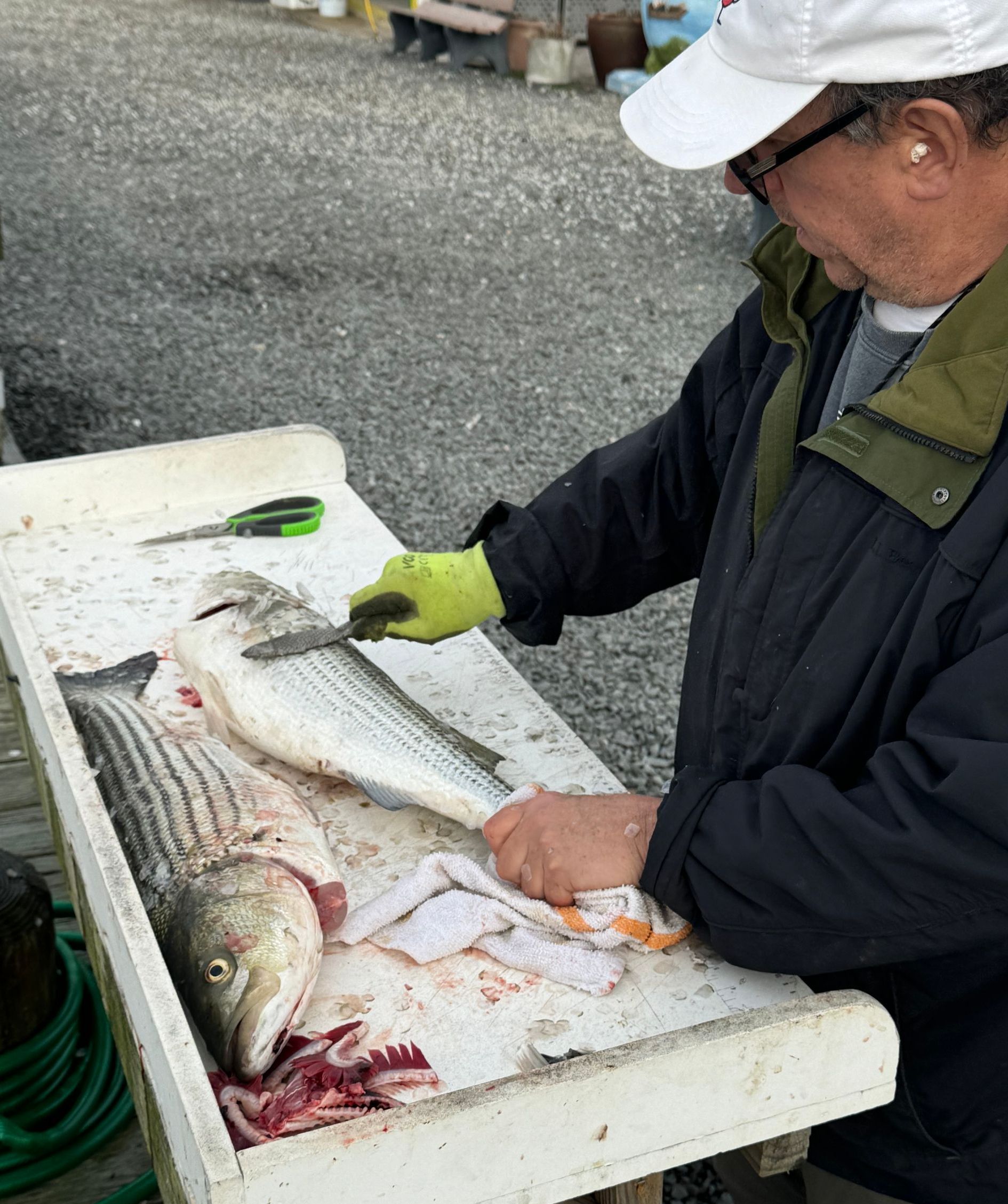
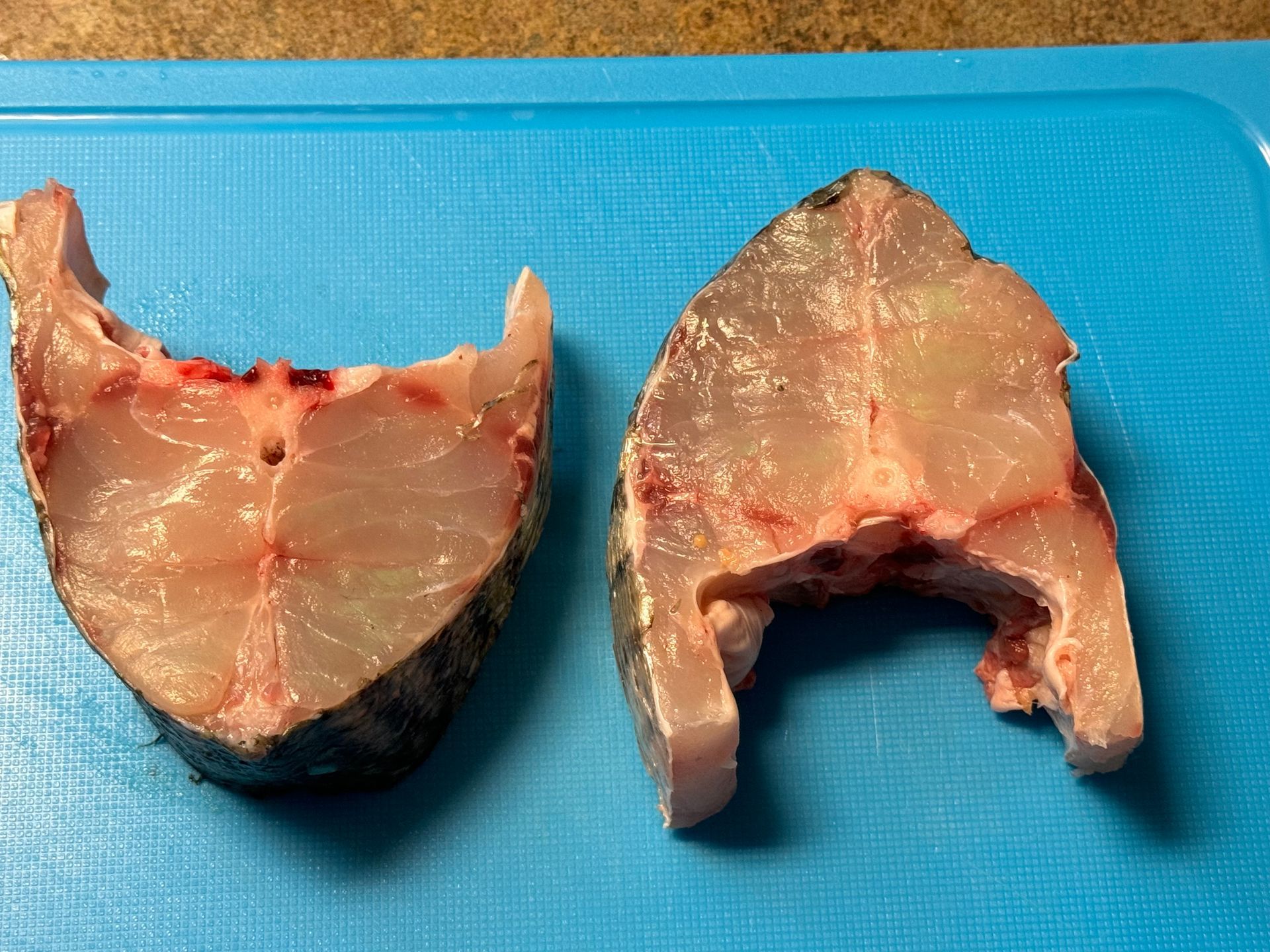
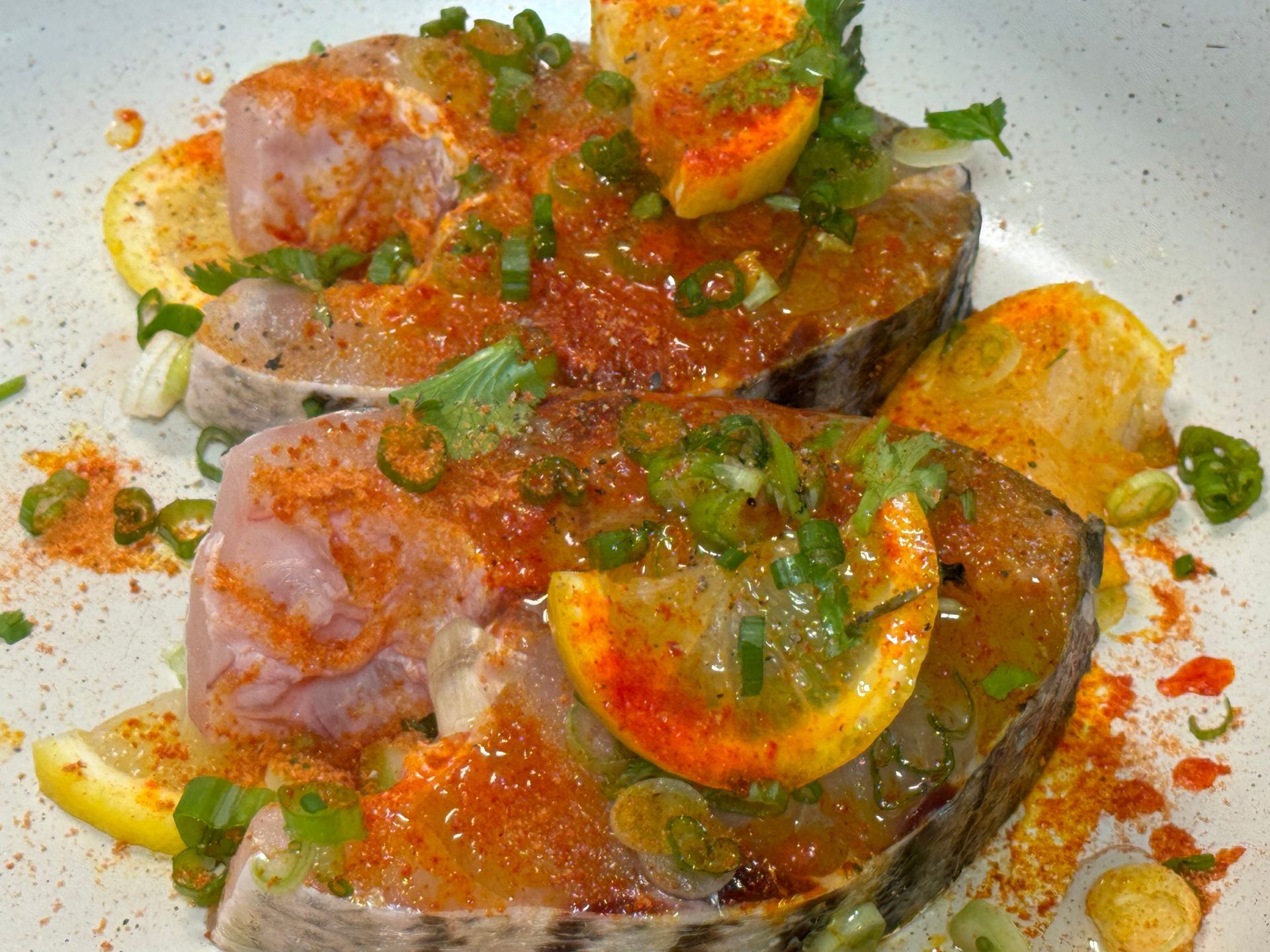
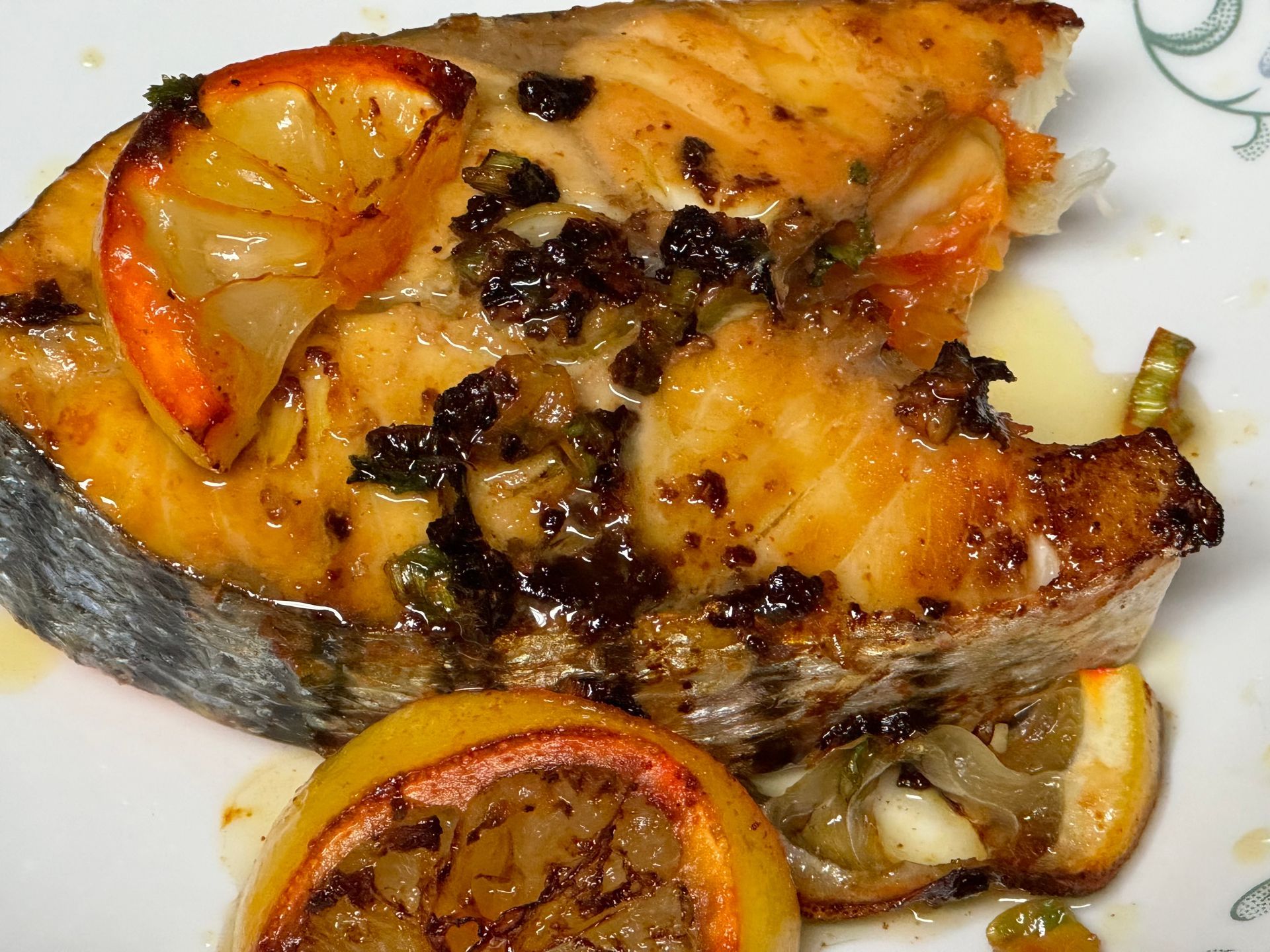
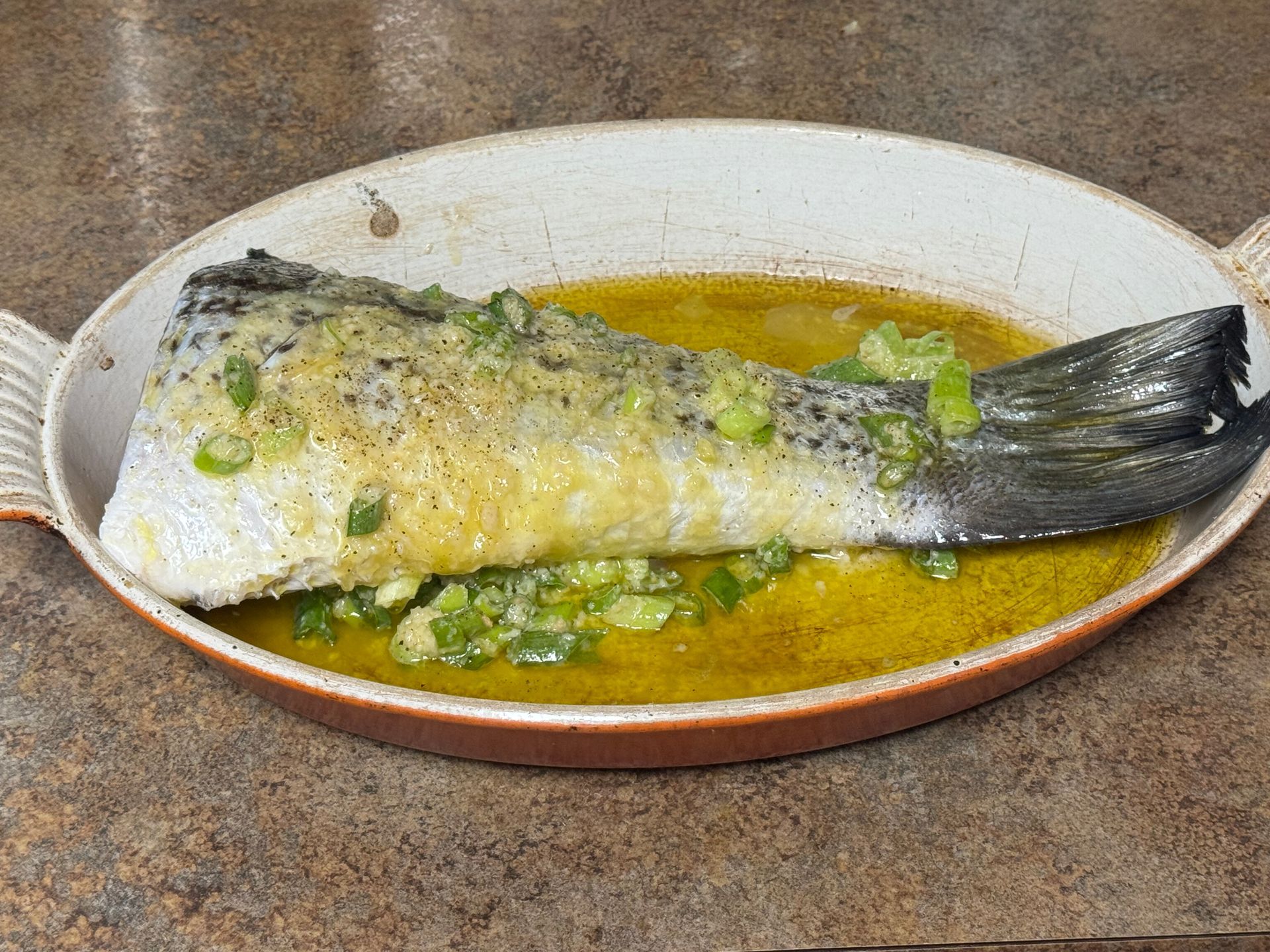
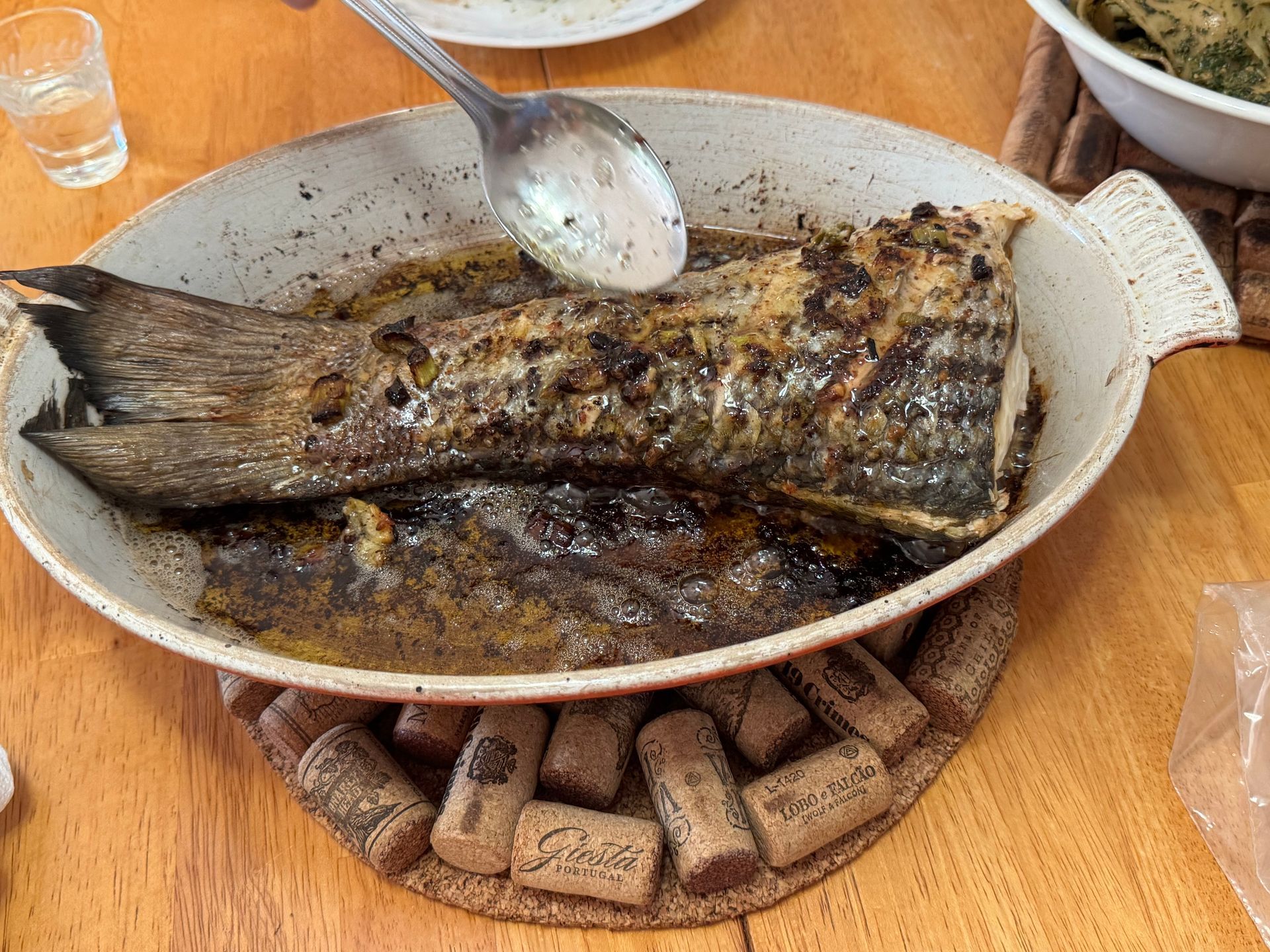
Step 1
Have your seafood butcher fabricate the seafood carefully to eliminate all scales, grills, fins and blood.
Also request the portions are all the same in size, weight and appearance. Since fish have much different thickness at the tail end than in the middle, the portions may be dramatically different. (and will cook differently).
If you are preparing a meal for guests, it's best if each portion looks the same, in my opinion.
Step 2
Place the oil, lemons, garlic, herbs, seasonings into a bowl and blend with a whisk. Place the darnes into the marinade and toss so that all of the darnes are marinated. Allow the fish to marinate about 20 minutes.
If you are planning to marinate longer, do not add the salt at this time, it will draw moisture out of the fish.
Step 3
Place the darnes on to a sheet pan & bake at 350° F in a preheated oven until the seafood reaches an internal temperature of 145° F.
If you are grilling, simply place onto a preheated grill which has been cleaned and rubbed with oil to avoid sticking. Grill for about 4 minutes on each side.
